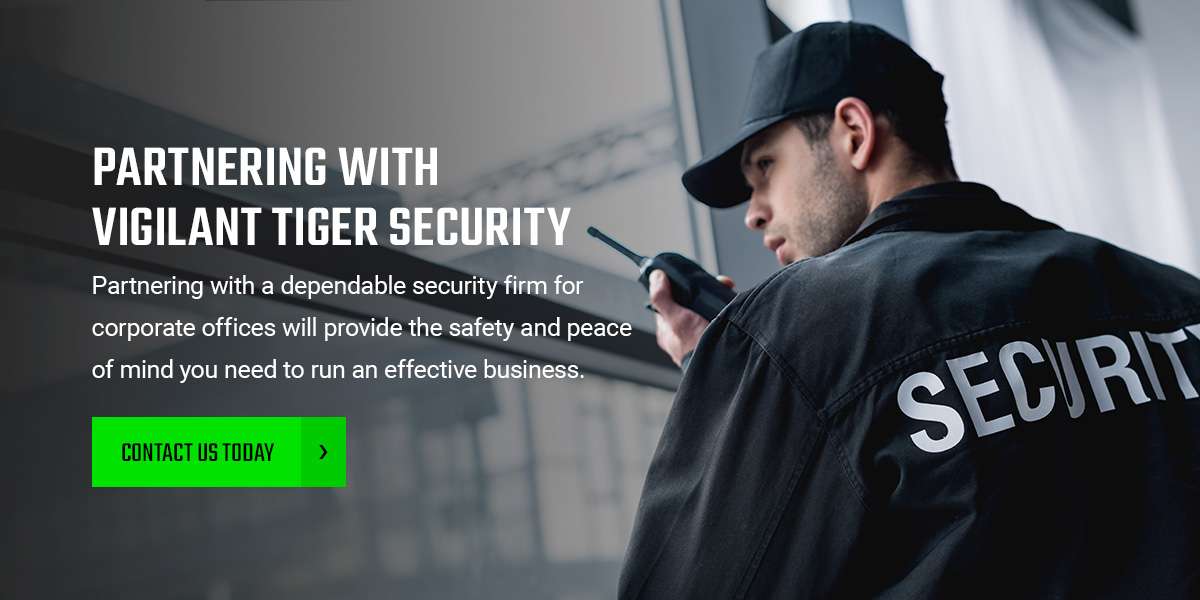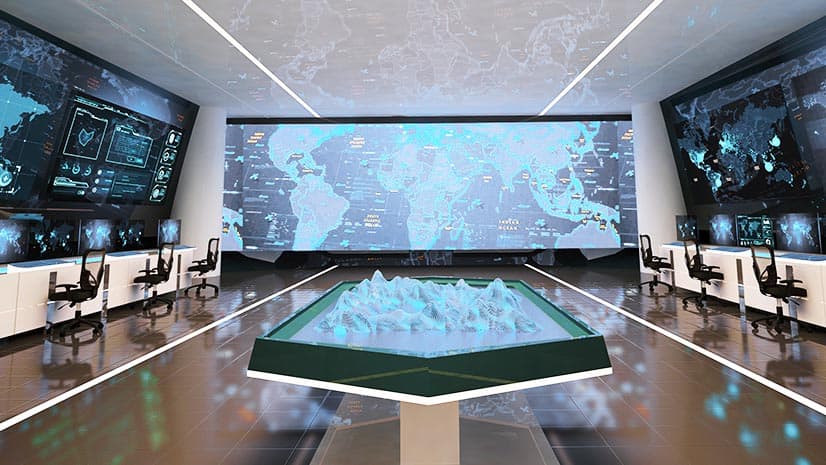From Cybersecurity to Physical Measures: Strengthening Company Security in a Changing Globe
In today's swiftly developing digital landscape, the relevance of business security can not be overemphasized. As cyber threats end up being prevalent and significantly sophisticated, companies must exceed traditional cybersecurity procedures to safeguard their operations and possessions - corporate security. This is where the assimilation of physical safety measures ends up being critical. By integrating the toughness of both cybersecurity and physical safety and security, firms can create a thorough protection strategy that attends to the diverse array of dangers they deal with. In this conversation, we will check out the transforming danger landscape, the need to incorporate cybersecurity and physical safety, the implementation of multi-factor verification steps, the significance of staff member awareness and training, and the adaptation of protection measures for remote labor forces. By examining these crucial locations, we will certainly obtain valuable insights into how organizations can enhance their business safety in an ever-changing world.
Comprehending the Changing Threat Landscape
The developing nature of the modern world demands a detailed understanding of the changing risk landscape for efficient corporate safety and security. In today's interconnected and digital age, hazards to business safety and security have actually ended up being much more complex and innovative. As innovation developments and organizations end up being increasingly dependent on electronic facilities, the potential for cyberattacks, data breaches, and other security breaches has dramatically boosted. It is critical for companies to remain notified and adjust their safety and security gauges to address these advancing risks.
One trick facet of understanding the changing risk landscape is acknowledging the various types of dangers that companies face. In addition, physical risks such as burglary, criminal damage, and business reconnaissance remain widespread worries for services.
Tracking and assessing the danger landscape is crucial in order to recognize prospective dangers and vulnerabilities. This involves remaining updated on the current cybersecurity trends, analyzing danger knowledge reports, and conducting normal danger assessments. By understanding the transforming danger landscape, organizations can proactively implement ideal protection procedures to reduce risks and secure their possessions, reputation, and stakeholders.
Integrating Cybersecurity and Physical Protection
Integrating cybersecurity and physical protection is vital for extensive corporate security in today's electronic and interconnected landscape. As organizations significantly depend on technology and interconnected systems, the borders between physical and cyber hazards are becoming obscured. To effectively secure against these dangers, an all natural method that incorporates both cybersecurity and physical safety and security actions is important.
Cybersecurity concentrates on protecting digital properties, such as systems, networks, and data, from unapproved access, interruption, and burglary. Physical security, on the various other hand, incorporates steps to safeguard physical properties, people, and facilities from susceptabilities and hazards. By integrating these 2 domain names, organizations can deal with susceptabilities and dangers from both physical and digital angles, thus improving their overall security stance.
The integration of these 2 techniques permits a much more thorough understanding of security threats and makes it possible for a unified reaction to occurrences. Physical gain access to controls can be improved by integrating them with cybersecurity procedures, such as two-factor verification or biometric recognition. Cybersecurity procedures can be matched by physical safety and security steps, such as surveillance cameras, alarms, and safe and secure accessibility factors.

Executing Multi-Factor Verification Steps
As companies increasingly focus on comprehensive protection measures, one reliable technique is the implementation of multi-factor authentication procedures. Multi-factor verification (MFA) is a safety and security approach that calls for users to offer numerous kinds of identification to access a system or application. This technique includes an extra layer of security by integrating something the customer knows, such as a password, with something they have, like a safety and security or a finger print token.
By applying MFA, organizations can dramatically boost their security posture - corporate security. Conventional password-based authentication has its restrictions, as passwords can be quickly endangered or neglected. MFA mitigates these threats by adding an additional authentication element, my sources making it much more challenging for unauthorized individuals to get access to delicate details
There are numerous sorts of multi-factor authentication techniques offered, including biometric authentication, SMS-based verification codes, and hardware symbols. Organizations require to analyze their specific needs and pick one of the most proper MFA option for their requirements.
Nevertheless, the implementation of MFA should be thoroughly planned and carried out. It is essential to strike a balance between protection and use to stop user disappointment and resistance. Organizations needs to also consider prospective compatibility concerns and give sufficient training and assistance to make sure a smooth transition.
Enhancing Employee Recognition and Training
To strengthen corporate protection, companies must prioritize improving staff member recognition and training. Numerous safety violations take place due to human mistake or lack of awareness.
Efficient worker recognition and training programs need to cover a large range of topics, including information defense, phishing attacks, social engineering, password hygiene, and physical safety and security procedures. These programs need to be tailored to the particular requirements and obligations of various staff member duties within the company. Routine training workshops, sessions, and simulations can help employees develop the required skills and knowledge to identify and respond to protection hazards properly.
Furthermore, organizations should urge a society of safety and security awareness and give continuous updates and tips to maintain employees educated regarding the most up to date threats and reduction techniques. This can be done via interior interaction channels, such as e-newsletters, intranet websites, and e-mail campaigns. By cultivating a security-conscious labor force, organizations can dramatically minimize the possibility of security occurrences and protect their useful assets from unapproved access or concession.

Adapting Security Steps for Remote Labor Force
Adapting corporate safety and security procedures to suit a remote labor force is important in making sure the defense of delicate details and properties (corporate security). With the increasing trend of remote work, organizations should carry out ideal security measures to mitigate the risks related to this new method of working
One important facet of adjusting safety actions for remote job is developing safe and secure interaction networks. Encrypted messaging systems and online personal networks (VPNs) can assist safeguard sensitive information and prevent unapproved accessibility. In addition, companies must implement the use of solid passwords and multi-factor authentication to boost the safety and security of remote accessibility.
An additional important consideration is the execution of safe remote gain access to services. This involves giving staff members with protected access to company sources and data via digital desktop framework (VDI), remote desktop computer protocols (RDP), or cloud-based solutions. These technologies make certain that sensitive information continues to be protected while enabling staff members to perform their duties successfully.

Lastly, detailed protection awareness training is essential for remote staff members. Educating sessions should cover best practices for securely accessing and dealing with sensitive info, determining and reporting phishing efforts, and keeping the total cybersecurity health.
Verdict
Finally, as the risk landscape continues to progress, it is vital for companies to reinforce their protection gauges both in the cyber right here and physical domain names. Incorporating cybersecurity and physical protection, carrying out multi-factor verification procedures, and enhancing employee awareness and training are vital useful site steps towards achieving robust company protection. In addition, adjusting safety steps to accommodate remote workforces is vital in today's altering world. By implementing these actions, companies can reduce risks and protect their beneficial properties from prospective risks.
In this discussion, we will certainly explore the transforming risk landscape, the demand to integrate cybersecurity and physical protection, the application of multi-factor verification steps, the importance of worker awareness and training, and the adaptation of security procedures for remote workforces. Cybersecurity steps can be enhanced by physical safety and security steps, such as monitoring cameras, alarms, and safe and secure access factors.
As companies increasingly focus on thorough safety and security procedures, one effective method is the execution of multi-factor verification steps.In final thought, as the hazard landscape continues to progress, it is crucial for organizations to strengthen their security gauges both in the cyber and physical domain names. Incorporating cybersecurity and physical safety and security, implementing multi-factor authentication steps, and enhancing staff member understanding and training are vital actions in the direction of attaining robust corporate safety and security.